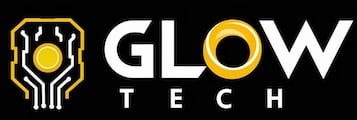
In today’s fast-moving business landscape, finance teams face growing pressure to deliver timely, accurate insights that guide strategic decision-making. Yet, many organizations remain bogged down by manual accounting processes, disconnected systems, and the inevitable human errors that accompany them. The result? Lengthy close cycles, late reports, and frustrated finance professionals.
That’s why the ability to automate financial close has shifted from a competitive advantage to a business necessity. Automation doesn’t just speed up reconciliation and reporting—it transforms finance into a forward-looking, data-driven function capable of driving growth.
The Pain Points of a Manual Close
A traditional month-end close often feels like a race against the clock. Teams scramble to collect data from multiple spreadsheets, verify journal entries, and reconcile accounts under immense pressure. Common pain points include:
Data silos across ERP systems, subsidiaries, and departments
Repetitive manual tasks like matching transactions or rolling forward balances
Version control issues when multiple team members edit the same spreadsheet
Delayed reporting that limits business agility
These challenges lead to longer cycle times, increased risk of material misstatements, and lower morale among finance staff. According to recent surveys, more than half of finance teams still rely heavily on manual inputs, despite acknowledging the inefficiencies of this approach.
The Case for Automation
Automation changes the game by eliminating many of these pain points. Modern financial automation platforms streamline close activities, allowing teams to focus on high-value analysis rather than data wrangling. The benefits are immediate and measurable:
Speed and Efficiency – Automated workflows ensure that reconciliations, journal entries, and approvals happen simultaneously instead of sequentially.
Accuracy and Compliance – Automation reduces the likelihood of manual errors and enforces controls, supporting compliance with accounting standards and audit requirements.
Visibility and Accountability – Real-time dashboards let controllers track progress and identify bottlenecks instantly.
Employee Satisfaction – Freed from repetitive tasks, finance professionals can devote time to analysis, forecasting, and strategy.
In essence, automation empowers finance leaders to close the books faster—without sacrificing accuracy or compliance.
What It Means to “Automate Financial Close”
To automate financial close is to digitize the entire closing process—from data collection to reconciliation to final reporting. It involves using integrated software to handle recurring tasks that once required manual intervention.
For example, automation tools can:
Import data directly from ERP and sub-ledger systems
Match intercompany transactions automatically
Flag anomalies for review instead of requiring full manual checks
Route journal entries for approval through digital workflows
Consolidate results across entities with one click
The result is a more seamless, auditable, and transparent process—one that reduces the month-end crunch and helps CFOs deliver insights faster.
The Strategic Impact of a Faster Close
Closing the books faster isn’t just about efficiency—it’s about agility. When finance can produce accurate reports days (or even weeks) sooner, the business gains a real-time view of performance and can make decisions proactively rather than reactively.
With automation:
Executives gain timely insights into cash flow, profitability, and operational trends.
Forecasting improves, thanks to up-to-date data and fewer delays.
Audits become smoother, since digital trails provide clear documentation.
Finance becomes a strategic partner to the business, not just a compliance function.
In this sense, automating financial close isn’t simply an operational improvement—it’s a catalyst for transformation across the organization.
Implementing Automation: Best Practices
Transitioning to an automated close process doesn’t happen overnight, but success follows a clear roadmap:
Assess Current Processes
Map out your existing workflows, bottlenecks, and dependencies. Identify tasks most prone to error or delay—these are prime candidates for automation.Choose the Right Technology
Select a solution that integrates with your existing ERP and reporting systems. Scalability, ease of use, and audit functionality should top your checklist.Prioritize Change Management
Automation isn’t just a technology shift—it’s a cultural one. Train teams, redefine roles, and foster a mindset focused on analysis and insight rather than data entry.Measure and Optimize
Track key metrics such as close duration, error rates, and audit adjustments to evaluate the impact. Use analytics to continuously refine processes.
The Future of Financial Close
As regulatory scrutiny increases and the demand for real-time insights grows, automation will continue to advance. Artificial intelligence (AI) and machine learning are already enhancing anomaly detection and predictive forecasting. Cloud-based systems now enable remote collaboration across global finance teams.
Organizations that embrace automation today position themselves for success tomorrow. Those that don’t risk falling behind—trapped in slow, error-prone cycles while competitors move forward with data-driven speed.
In Short
The modern finance function cannot afford to operate at the pace of spreadsheets and manual reconciliations. To remain competitive, organizations must automate financial close processes and leverage technology that delivers speed, accuracy, and insight.
In doing so, finance teams evolve from number crunchers into strategic advisors—helping their organizations not just close the books faster, but open the door to smarter, more agile business decisions.




